Removing grease from a stainless steel cooker hood is a task many kitchen enthusiasts face, often finding it more challenging than anticipated.
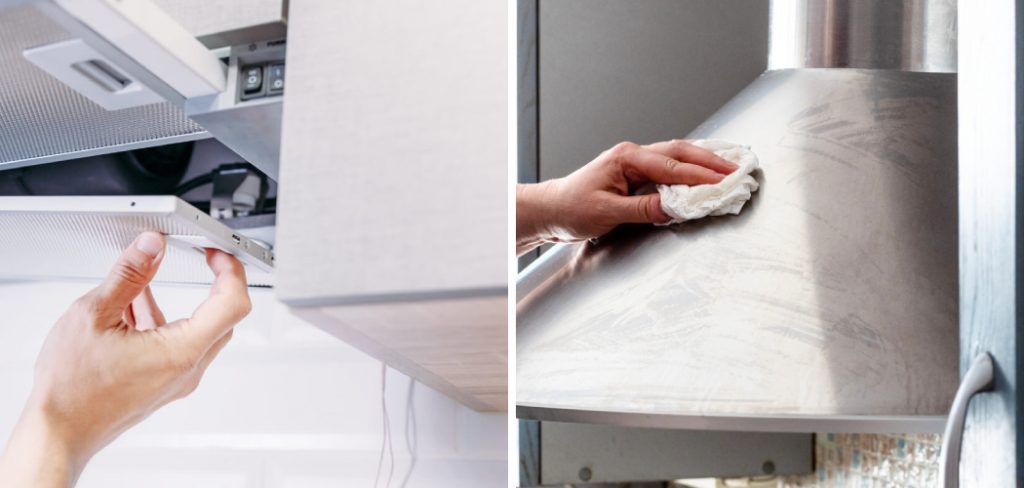
Cooker hoods are essential for maintaining a clean and odor-free kitchen, but their frequent exposure to cooking fumes and grease can quickly tarnish their appearance and efficiency.
This guide aims to provide a comprehensive approach on how to remove grease from stainless steel cooker hood, ensuring your stainless steel hood remains both functional and aesthetically pleasing.
We’ll delve into a variety of cleaning methods, ranging from natural solutions like vinegar and baking soda to specialized stainless steel cleaners.
Additionally, we’ll offer tips on regular maintenance to prevent excessive grease accumulation in the future.
By understanding the properties of stainless steel and the best practices for cleaning it, you can maintain a spotless and hygienic cooker hood that enhances the overall look and feel of your kitchen. Let’s explore the steps to achieve a gleaming, grease-free stainless steel cooker hood.
Common Methods and Challenges to Removing Grease Buildup
Removing grease buildup from your stainless steel cooker hood can be accomplished through several effective methods, each with its own set of challenges.
Common Methods
- Vinegar and Baking Soda:
Mix equal parts white vinegar and water in a spray bottle, and apply it to the greasy surfaces of your cooker hood. Let it sit for a few minutes, then use a soft cloth or sponge to wipe it clean. For tougher spots, make a paste with baking soda and water, and gently scrub with a non-abrasive sponge.
- Dish Soap and Warm Water:
Dish soap is designed to cut through grease, making it an excellent option for cleaning your cooker hood. Mix a few drops of dish soap with warm water, dip a sponge or cloth into the solution, and wipe down the greasy areas. Rinse with clean water and dry with a microfiber cloth to avoid streaks.
- Commercial Stainless Steel Cleaners:
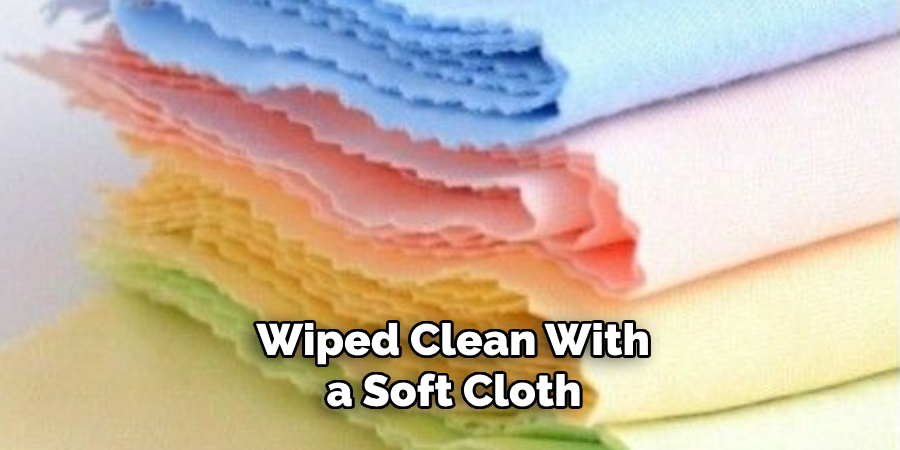
Various commercial cleaners are specifically formulated for stainless steel. These products are usually applied directly to the surface and wiped clean with a soft cloth. They often leave a protective layer that helps prevent future grease buildup.
- Degreaser Sprays:
Available at most grocery stores, degreaser sprays are designed to tackle tough grease stains. Spray the degreaser onto the affected areas, let it sit for a few minutes, and then wipe away with a cloth or paper towel.
Challenges
Despite the availability of various methods, several challenges can arise during the cleaning process:
- Stubborn Grease Spots:
Over time, grease can harden and become more difficult to remove. In such cases, multiple applications of cleaning agents might be required, along with more elbow grease.
- Avoiding Scratches:
Stainless steel can scratch easily if abrasive materials or harsh scrubbing pads are used. It’s crucial to stick to non-abrasive sponges and soft cloths to preserve the smooth surface of your cooker hood.
- Removing Streaks:
Some cleaning solutions, especially homemade ones, can leave streaks on stainless steel. To combat this, always finish by wiping down the surface with a dry, microfiber cloth to ensure a streak-free finish.
- Dealing with Filters:
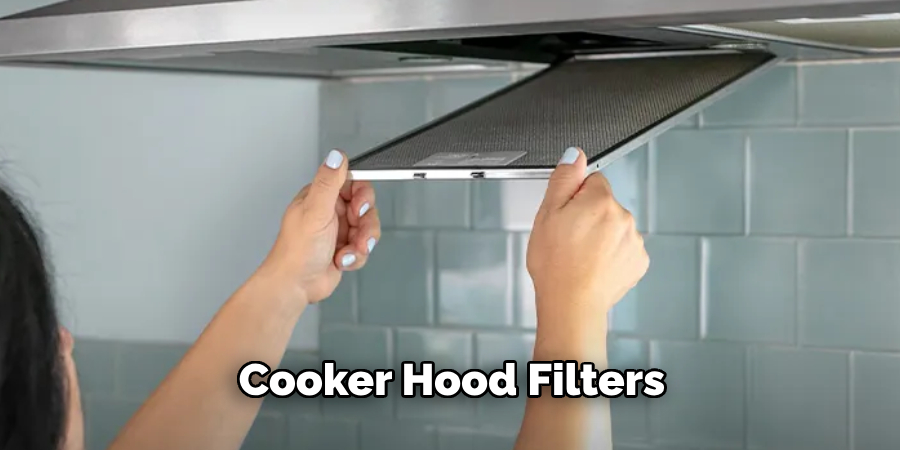
Cooker hood filters can become clogged with grease and need thorough cleaning. Depending on the model, filters may be dishwasher-safe or require hand washing. Always check the manufacturer’s instructions for the best cleaning practice.
By understanding these common methods and anticipating the challenges, you can tackle the grease buildup on your stainless steel cooker hood more effectively, ensuring it remains spotless and functional.
Understanding Stainless Steel Cooker Hoods
Stainless steel cooker hoods are a popular choice in modern kitchens due to their durability, sleek appearance, and efficient functionality. Unlike other materials, stainless steel is highly resistant to heat, corrosion, and stains, making it ideal for environments exposed to high cooking temperatures and steam.
This alloy typically contains a mix of iron, carbon, and other elements like chromium and nickel that enhance its strength and resistance to rust and tarnish.
One of the key features of stainless steel cooker hoods is their ability to maintain a hygienic surface. The smooth, non-porous surface doesn’t harbor bacteria or absorb odors, making it easier to clean and maintain.
Additionally, the reflective properties of stainless steel can make even small kitchens feel more spacious and bright, adding to the aesthetic appeal.
However, to fully appreciate and maintain the benefits of a stainless steel cooker hood, homeowners must understand its characteristics and proper care methods. Regular cleaning and proper maintenance are essential to prevent the accumulation of grease and grime, which can detract from the hood’s pristine appearance and optimal performance.
By investing in quality stainless steel products and staying informed about their care, you can ensure your cooker hood remains a functional and stylish fixture in your kitchen for years to come.
Stainless Steel Cooker Hoods and Their Role in the Kitchen
Stainless steel cooker hoods play a vital role in modern kitchens by effectively managing air quality and enhancing overall functionality. These indispensable appliances are designed to extract smoke, steam, and cooking odors, thereby maintaining a fresh and pleasant kitchen environment.

By removing airborne grease particles, cooker hoods help to prevent the formation of sticky residues on walls and cabinetry, thus preserving the kitchen’s cleanliness and reducing the need for frequent deep cleaning.
Furthermore, the sleek design of stainless steel cooker hoods complements contemporary kitchen aesthetics.
They blend seamlessly with other stainless steel appliances, contributing to a cohesive and sophisticated look. These cooker hoods are available in various styles, including chimney, island, and integrated models, making it easy to find one that suits different kitchen layouts and personal preferences.
Importance of Regular Maintenance
Regular maintenance of stainless steel cooker hoods is crucial to ensuring their longevity and optimal performance.
Without consistent upkeep, grease and grime can accumulate, impairing the efficiency of the hood and leading to potential mechanical issues. Periodic cleaning prevents the buildup of these substances, which can not only harm the hood’s functionality but also pose a fire hazard if left unchecked.
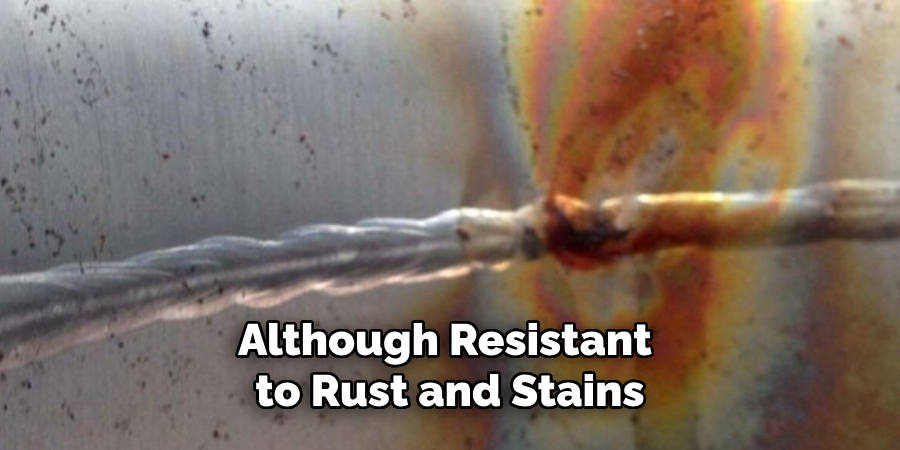
Additionally, regular maintenance helps in preserving the aesthetic appeal of the cooker hood. Stainless steel, although resistant to rust and stains, can lose its luster if not properly cared for. Regular polishing and cleaning with appropriate products keep the surface looking sleek and new, ensuring that the cooker hood remains an attractive component of the kitchen.
Another important aspect of maintenance is inspecting and cleaning the filters. These filters trap grease and other particles, and over time, they can become clogged, reducing the efficiency of the hood. Regular cleaning or replacement of filters, as directed by the manufacturer’s instructions, is essential to maintaining proper air flow and effective extraction of cooking fumes and odors.
10 Methods How to Remove Grease from Stainless Steel Cooker Hood
1. Using Warm Soapy Water and a Soft Cloth
One of the most straightforward and gentle methods for removing grease from a stainless steel cooker hood is using warm soapy water and a soft cloth. This method works well for light grease buildup. Start by filling a bucket with warm water and adding a few drops of mild dish soap.
Mix the solution until it becomes sudsy. Dip a soft cloth or sponge into the soapy water, then wring out the excess liquid. Gently wipe down the cooker hood, paying extra attention to areas with visible grease.
The warm water helps to loosen the grease, while the soap breaks down its oily composition. Use circular motions to lift the grease off the surface. Once the grease is removed, rinse the cloth in clean water and wipe down the hood to remove any soapy residue. Finally, dry the surface with a clean, dry cloth to prevent water spots and maintain the hood’s shine.
2. Applying White Vinegar
White vinegar is a natural degreaser that effectively cuts through grease without damaging the stainless steel. To use this method, fill a spray bottle with undiluted white vinegar. Spray the vinegar directly onto the greasy areas of the cooker hood. Allow the vinegar to sit for a few minutes to penetrate and dissolve the grease. Using a soft cloth or sponge, wipe down the hood in circular motions.
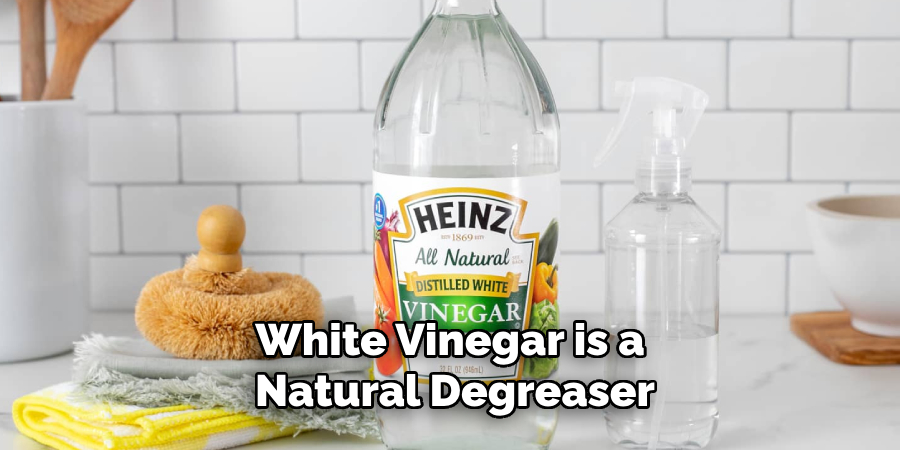
For stubborn grease spots, you may need to reapply the vinegar and repeat the process. Vinegar not only removes grease but also disinfects the surface, leaving it clean and shiny. After removing the grease, rinse the area with water and dry it wit
h a soft cloth to avoid streaks and maintain the stainless steel’s appearance.
3. Utilizing Baking Soda and Water Paste
Baking soda is a mildly abrasive cleaner that is excellent for tackling tough grease stains. To make a cleaning paste, mix baking soda with a small amount of water until it forms a thick, spreadable consistency. Apply the paste directly to the greasy areas of the cooker hood using a soft cloth or sponge. Allow the paste to sit for several minutes to break down the grease.
Gently scrub the area in circular motions, using the mild abrasiveness of the baking soda to lift the grease. Once the grease is removed, wipe away the paste with a damp cloth. Rinse the cloth frequently to ensure all the baking soda is removed. Finally, dry the hood with a clean, dry cloth to prevent water spots and streaks.
4. Using a Commercial Degreaser
Commercial degreasers are specifically formulated to tackle grease and grime, making them highly effective for cleaning a stainless steel cooker hood. Before using a commercial degreaser, read the product instructions carefully and ensure the area is well-ventilated. Spray the degreaser directly onto the greasy surfaces or apply it with a soft cloth, depending on the product directions.
Allow it to sit for the recommended amount of time to penetrate and dissolve the grease. Using a soft cloth or sponge, wipe down the hood, applying gentle pressure to lift the grease. After the grease is removed, rinse the area with warm water and a clean cloth to remove any residual cleaner. Dry the hood thoroughly with a soft cloth to prevent water spots and maintain its shine.
5. Trying Olive Oil
Olive oil may seem counterintuitive for removing grease, but it can be surprisingly effective, especially for light grease buildup. Apply a small amount of olive oil to a soft cloth and rub it onto the greasy areas of the cooker hood. The oil helps to dissolve and lift the grease without scratching the stainless steel.
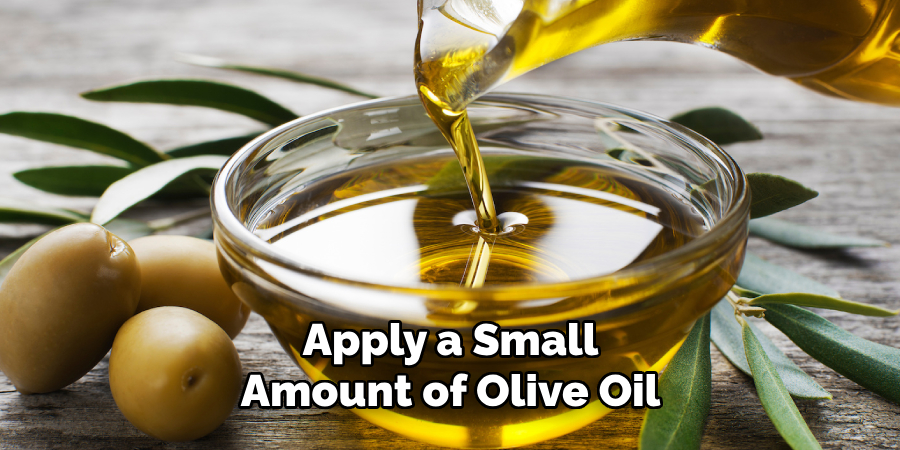
Allow the oil to sit for a few minutes to work its magic. Then, using a clean cloth, wipe away the olive oil and the dissolved grease. Follow up by cleaning the area with warm soapy water to remove any oily residue. Rinse thoroughly with water and dry the hood with a soft cloth to ensure a streak-free finish.
6. Using a Mixture of Vinegar and Baking Soda
Combining the cleaning power of vinegar and baking soda creates a potent solution for tackling tough grease stains. Start by spraying the greasy areas with white vinegar and allowing it to sit for a few minutes. Then, sprinkle baking soda over the vinegar. The combination of vinegar and baking soda creates a fizzy reaction that helps to break down and lift the grease.
Using a soft cloth or sponge, gently scrub the area in circular motions. The mild abrasiveness of the baking soda, combined with the degreasing power of vinegar, effectively removes grease without damaging the stainless steel. After the grease is removed, rinse the area with warm water and dry with a soft cloth to prevent water spots and maintain the hood’s shine.
7. Applying Lemon Juice
Lemon juice is a natural cleaner with excellent degreasing properties due to its acidity. To use lemon juice, cut a lemon in half and squeeze the juice onto a soft cloth. Rub the cloth onto the greasy areas of the cooker hood, applying gentle pressure in circular motions. The acidity of the lemon juice helps to break down the grease, making it easier to remove.
For stubborn spots, allow the lemon juice to sit for a few minutes before scrubbing. Once the grease is removed, wipe down the hood with a damp cloth to remove any remaining lemon juice. Finally, dry the hood with a clean, dry cloth to prevent water spots and ensure a shiny finish.
8. Using Dish Soap and Baking Soda
Combining dish soap and baking soda creates a powerful grease-cutting paste. To make this paste, mix a few drops of mild dish soap with baking soda until it forms a thick consistency. Apply the paste to the greasy areas of the cooker hood using a soft cloth or sponge. Allow the paste to sit for a few minutes to penetrate the grease.
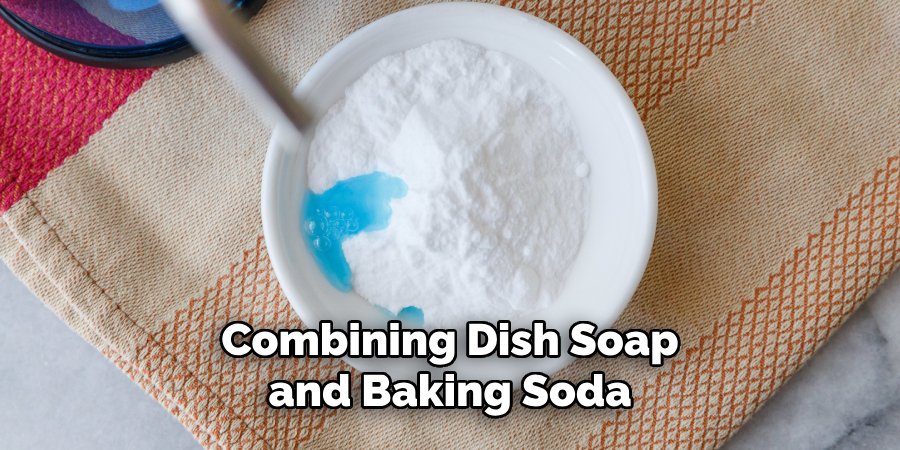
Gently scrub the area in circular motions, using the mild abrasiveness of the baking soda to lift the grease. Once the grease is removed, wipe away the paste with a damp cloth. Rinse the cloth frequently to ensure all the paste is removed. Finally, dry the hood with a clean, dry cloth to prevent water spots and maintain the stainless steel’s appearance.
9. Trying Cornstarch and Water Paste
Cornstarch is another mild abrasive that can effectively remove grease without scratching stainless steel. To make a cleaning paste, mix cornstarch with a small amount of water until it forms a thick, spreadable consistency. Apply the paste to the greasy areas of the cooker hood using a soft cloth or sponge.
Allow the paste to sit for several minutes to break down the grease. Gently scrub the area in circular motions, using the mild abrasiveness of the cornstarch to lift the grease. Once the grease is removed, wipe away the paste with a damp cloth. Rinse the cloth frequently to ensure all the cornstarch is removed. Finally, dry the hood with a clean, dry cloth to prevent water spots and streaks.
10. Using a Steam Cleaner
A steam cleaner is an effective tool for removing grease from a stainless steel cooker hood, especially for heavy grease buildup. The high temperature of the steam helps to dissolve and lift the grease without the need for chemicals.
Begin by filling the steam cleaner with water and allowing it to heat up according to the manufacturer’s instructions.
Hold the steam cleaner nozzle a few inches away from the greasy areas and apply steam in a sweeping motion. The heat and moisture will soften the grease, making it easier to wipe away with a soft cloth.
For particularly stubborn spots, you may need to apply steam multiple times. After the grease is removed, rinse the hood with clean water and dry with a soft cloth to ensure a streak-free finish.
Conclusion
Maintaining a stainless steel cooker hood’s pristine condition requires regular cleaning and the right techniques.
By using common household items such as vinegar, baking soda, and even olive oil, you can effectively remove grease and grime without damaging the surface. For more stubborn stains, commercial degreasers and steam cleaners offer powerful alternatives.
Regardless of the method chosen, always ensure to follow up with a thorough rinse and drying to prevent water spots and maintain the cooker hood’s shine. Thanks for reading, and we hope this has given you some inspiration on how to remove grease from stainless steel cooker hood!
Edmund Sumlin is a skilled author for Metal Fixes, bringing 6 years of expertise in crafting a wide range of metal fixtures. With a strong background in metalwork, Edmund’s knowledge spans various types of fixtures, from decorative pieces to functional hardware, blending precision with creativity. His passion for metalworking and design has made him a trusted resource in the industry.
Professional Focus:
- Expert in Metal Fixtures : Edmund aesthetic specializes in creating durable and innovative metal fixtures, offering both appeal and functionality. His work reflects a deep understanding of metalworking techniques and materials.
- Sustainability Advocate : He is dedicated to using sustainable practices, ensuring that every fixture is crafted with eco-friendly methods while maintaining high-quality standards.
In his writing for Metal Fixes, Edmund provides valuable insights into the latest trends, techniques, and practical advice for those passionate about metal fixtures, whether they are professionals or DIY enthusiasts. His focus on combining artistry with engineering helps others discover the true potential of metal in design.


